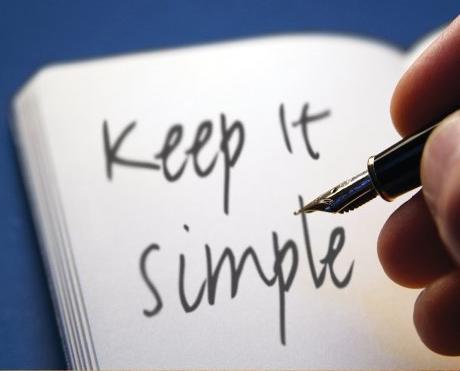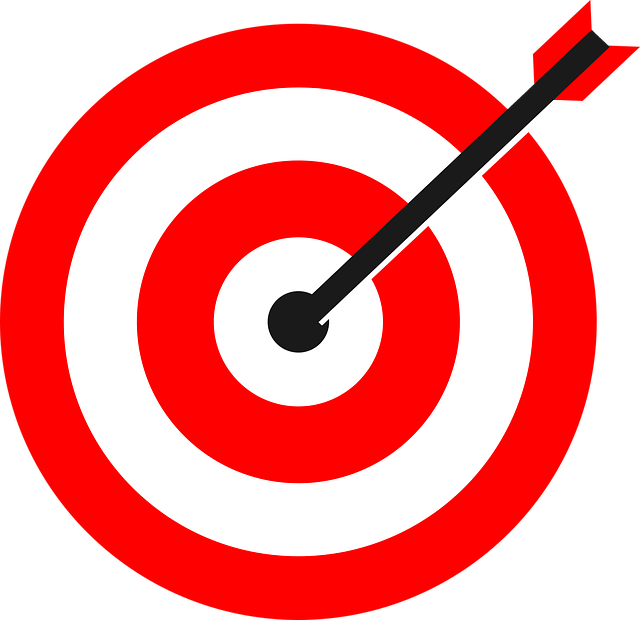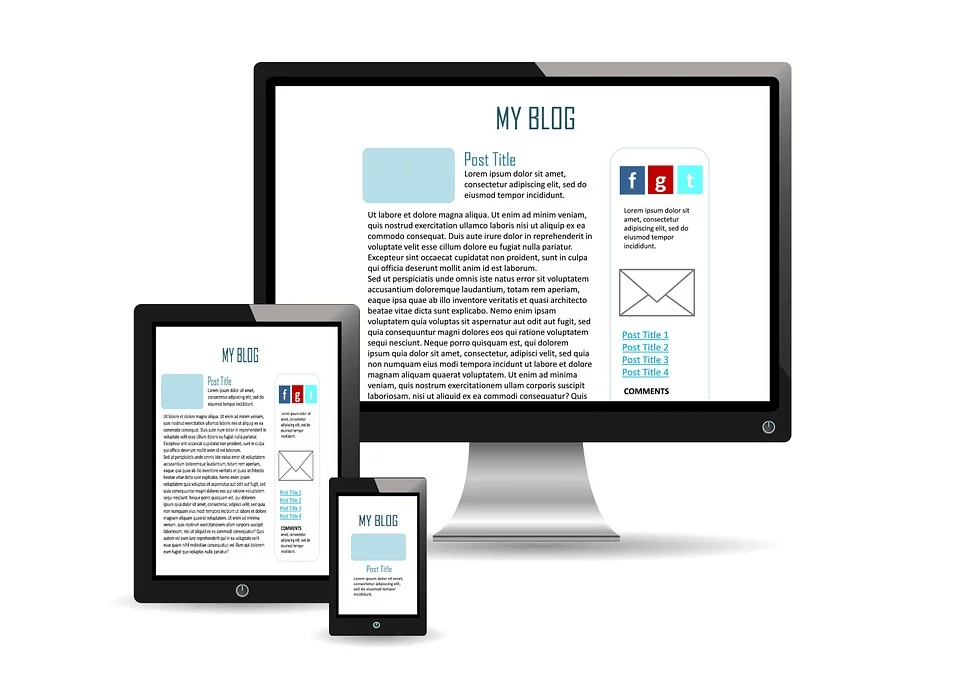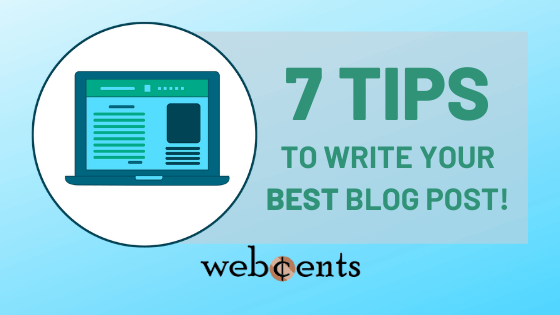As a blogger, if you want to make money starting a blog, you need to be publishing helpful and valuable articles that readers will enjoy. This goal seems simple, but many bloggers struggle with this.
More importantly, they don’t even know why they are struggling and what areas in their blog they need to improve on.
So, in this article, I will go over 7 tips that I personally follow to help you make your blog post so great that your reader won’t want to leave. When you can get readers sticking to your blog, you have better chances of making money blogging.
Without further ado, let’s get going with these 7 blogging tips that you should be working on right now.
1. Keep it simple.

Have you ever heard of the K.I.S.S. principle? It stands for Keep It Stupid Simple! That’s exactly what your content needs to be: stupid simple!
Explain to your readers.
You might not notice it, but you may end up saying stuff when your readers don’t even know what they mean. So make sure to define any words that might be unfamiliar to your audience.
If you’re writing an article on the best diets and you recommend the keto diet, make sure you tell them what the keto diet is and how it all works.
Simplify your words.
Not only that, but you might write technical words that can really be simplified. For example, choose which of these two quotes you’d rather read.
A computer’s motherboard has tons of varying components that together serve as the driving force of a computer, like the CPU, the RAM, and the HDD.
The motherboard of a computer has many different parts that allow the computer to work, like the central processing unit (CPU), which is the brains of the computer, the random access memory (RAM), which helps the computer to do multiple things at once, and the hard disk drive (HDD), which stores your photos, documents, and other files.
The second version of the quote may be longer, but it’s much more understandable to read than the first version.
The trick here is to always write your articles as if you were talking to someone who knew nothing about what you’re saying. You want to be able to accommodate both the amateur and the newbie in your articles.
2. Stay on topic.

Believe it or not, it’s really easy to stray away from a topic you might have chosen. For example, I have written over 30 articles that allow people to make money online and I think I wrote them pretty well.
You see that? I just strayed away from my topic. I was telling you about my own articles instead of how you can improve your own blog articles.
Ways to Stay on Topic
So always make sure that, when you’re writing, you always have your topic in mind. Here are some ways on how you can stay on topic:
- Read your article and see if all the words and sentences fall into place. If there are sentences that don’t sound right where they are, remove them. If there are words that are not related to your topic, like the word “exercise” when your article is about going on a diet, remove them.
- Answer directly whatever problems the readers had when they came to your article. Don’t beat around the bush. If people want to know how to start a keto diet, they don’t want to learn what other diets they can choose from. They just want to do the keto diet and they want you to show them how to do it! So always keep the reader in mind!
- Just like my example, make sure you don’t talk about yourself unless you want people to connect with you. For example, it would’ve been better for me to say, “By sticking to my topic, my articles have gotten more traffic” rather than “I write articles that stick really well to my topic.”
Wanna know the best part? One of Google’s factors they consider when ranking your blog is relevance. So, by staying on topic and directly solving the problem your readers have, you can actually get a little ranking boost doing this!
3. Give as much information as you can.

When a reader has a problem and is looking through your blog article, they would like to see a solution to their problem right inside your article. If they don’t find what they want, they shake their head and go back to Google to find a different article or YouTube video that meets their needs.
However, if you can provide as much as you possibly know about how to solve their problems and explain those solutions in great detail, that’s great for your readers. They’ll be interested to see what you have to say and will stay on your article longer.
Explain like an Expert
The key here is to talk to them as if you know exactly what their problem is and you come across like an expert.
- If you’re writing a step-by-step guide, it’s not enough to give the steps, right? Explain how to do each step from beginning to end. Take your reader by the hand and guide them through how to get each step accomplished.
- If you’re writing a list of multiple websites for your readers to look into, explain what each website has and how it can help them out.
Of course, you don’t know everything there is to know about anything. But that’s where research comes in.
Do Some Research
If you yourself don’t know the solution to a problem you want to write about, find other blog articles and YouTube videos that can explain it to you. Take what you learn and write it all in your own words. (Never copy anyone else’s content!)
By giving a lot of information, you look more like an authority, and your readers will want to stick around your article and maybe even share it. And, of course, that makes Google happy, so they might just rank you higher!
4. Make your article appealing.

What do I mean by that? Well, readers who come to your blog usually don’t read your entire article word for word. They would rather scan your article, looking for an answer to their problem.
The thing is, if your article doesn’t look attractive, your reader’s going to leave instantly. Let’s go through three simple things you can do to improve the appearance of your article.
Use Headings
By using headers, readers who scan your article will know exactly what part of your content they’re looking at. Notice how I use headers inside each of the steps I’m giving you, just like this piece of content here.
That way, if people would rather skip the details and just find what they really need, they can use the headings to see what part of the article they’re looking at.
Keep in mind to use the right heading styles, though. Use H2 for your first headings, then use H3 for any headings inside them, and then H4 inside those. For example, you’re reading Step 4, which is marked with an H2, and this section is about Headings, which is marked with an H3.
Avoid Huge Paragraphs
Let me ask you a question: would you rather read an article with shorter paragraphs or huge blocks of text? Probably the first option, right?
That’s what you need to do in your article. Use plenty of paragraphs to separate your content and make them look less daunting. That way, it’s easy for your readers to scan inside your content.
People get turned off by huge boxes of text and that can get them to leave, but if you can split up your article into easy-to-read paragraphs, that will convince your reader to continue searching for what they really want.
Highlight Important Parts
If there’s certain parts of your article that readers need to focus their attention on, then you should highlight them to make them stand out from the rest of your article. There are two ways you can do that:
- Use bullet points like this one. If there is a list of things you want your readers to keep in mind, bullet points are a great choice.
- Make some of your text bold, especially if they are important words, definitions, or statements you want your reader to remember.
By making your article look more appealing, readers will want to stay on your article longer and focus on the content you are providing.
5. Add visuals to enhance your article.

Have you heard of the phrase “a picture is worth a thousand words”?
Well, it’s true! Visuals can tell us a lot more information than what any group of words can provide, just like a smile or handshake means a lot more than “Hi, how are you?”
So, for you, that means, even if your text looks nice and readable, if your blog is all text and nothing else, that can turn readers off. So, in addition to your article content, you should add appropriate visuals, particularly ones that correlate to the portion of the content you’re talking about.
How and Where to Add Visuals
Here are some places where you should be adding some visuals:
- For each section of your blog article, include a picture that is appropriate to what you’re saying. For example, if you’re talking about the importance of eating fruits and veggies, include a picture of fruits and veggies.
- If you’re showing how to do something through a computer screen, provide screenshots.
- If you’re explaining what something is, you can use a graphic that explains it well. You can find graphics online for free or you can make your own graphic using sites like Canva.com.
- If you’re running a YouTube channel in addition to your blog, that’s a bonus! Just upload a YouTube video version of your blog article and embed that video inside your article.
By adding visuals, you can get readers to stay on longer and, at the same time, better understand what you’re trying to say so they have a clearer picture in their mind as they’re enjoying your content.
6. Give an attractive title and description.
These two elements are what will get your search engine traffic into your article. Take a look at an example of a title and meta description for one of the articles here on the WebCents Blog:

Since your blog is going to be alongside other websites in the search results, you need to use your title and meta description to convince readers to click on your blog. Here are a few tips to help you:
- If you want your article to rank for a certain topic, include the idea of your topic inside your title. For example, you can name your title How to Invest in Real Estate or 8 Ways to Invest in Real Estate.
- In your meta description, briefly describe what problem your readers may be having and how you can help them. If your article is for people with slow Windows computers, your meta description can be something like: “There are many ways a Windows computer can lag or freeze up. Check out my 10 methods on how you can speed up your computer back to life again.“
- Remember to keep your title less than about 15 words and your meta description less than about 30 words. If you go over the limit, some of your title and description won’t fit in your search result and won’t appear.
Once you provide a good title and meta description, you might be surprised to find your article ranked a little higher and getting a little more traffic from the search engines. Now that’s an article worth reading!
7. Link out to other helpful resources.

People love to move around, especially on the Internet. If your reader wants to move on away from your article, you need to give them opportunities to do that. Otherwise, they’re gonna hit that Back button and find a different article or YouTube video.
Instead, offer them recommendations for them to take a look at throughout your article. Let those recommendations be links to other articles on your blog, to other blogs or YouTube videos, or even links to affiliate products that can help the reader and earn you money.
And remember to give them a reason to click! Don’t just say “click here”. Tell them what they can expect by clicking your link. If they’re going to get a complete guide to losing weight, use the words “my beginners’ guide on how to lose weight now” as a link to that guide.
Not only will links help connect your reader to areas you recommend, but that can help Google determine the kind of content you’re offering.
Links are very important to any web page, so make sure your article has a good number of them. I recommend at least three links and no more than 10.
Conclusion

So those are the tips I have you on how to make your blog article worth reading. I hope they gave you amazing ideas on ways you can improve your writing and get more readers and traffic into your article and your blog overall.
A good point to remember is to think of yourself as the reader. If you wanted to look for a really amazing article to read, what would you expect that article to look like? Let your dream of the best-looking article guide you to making your own article look very close to that ideal article you’ve always wanted.
Other Resources
If you follow all these tips and are still not getting visitors to your blog, I would recommend that you focus on getting more traffic. Feel free to check out my beginners’ guide to search engine optimization (SEO) as well as other ways to get free traffic to your blog.
WordPress is an amazing way to simplify your work as a blogger. Make sure to check out how to use WordPress for beginners and also check out the best WordPress plugins that I would recommend you use.
And now it’s time for you to take action. Just remember these seven tips and you can tremendously improve the way you present information on your blog. The Google bots and all your blog readers will thank you.

